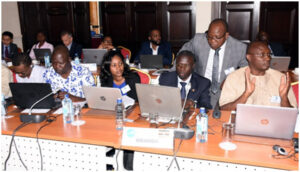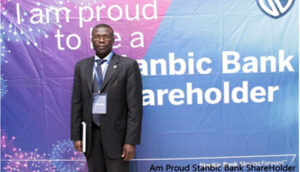- June 10, 2021
- Author: Ayoki Milton
- Category:
On June 23, 2016 the Ugandan President, Yoweri Kaguata Museveni while addressing the first inaugural cabinet at the State House Entebbe, outlined the steps his new government intended to take towards transforming Uganda economy from a low income, 18th world’s poorest country into a lower middle income country by 2020 and upper middle income by 2040. Underpinning this transformation, are four core principles: patriotism (non-sectarianism of religion or tribe and no gender – chauvinism), pan Africanism, social economic transformation, and democracy. However, such transformation is not a linear process, but a complex set of simultaneous equations, with many unknowns. He does tell us how he will solve the equations with multiple unknowns, but singled out ten ‘strategic bottlenecks’ that his administration will have to deal with to score the middle income goal in real time:
» Ideological disorientation;
» A weak State, especially the Army, that needed strengthening;
» Under-developed infrastructure (the railways, the roads, the electricity, the telephones, piped
water, etc.);
» The underdevelopment of the human resource (lack of education and poor health for the
population);
» Interfering with the private sector (either by policy or by corruption);
» A fragmented African market on account of colonialism; exporting unprocessed raw materials and,
therefore, getting little money and losing jobs;
» Lack of industrialization;
» The underdevelopment of the services sector (hotels, banking, transport, insurance, etc.);
» The underdevelopment of agriculture; and
» The attack on democracy.
At the international level, two necessary and sufficient conditions are jointly required at a minimum for a country to be considered a “middle-income”; it must have attained a GDP Per capita of between US$ 1026 and US$ 12,475. The country must also have achieved progress in aspects of human development and vulnerability to economic shocks. The President maintains that the first two bottlenecks are no longer binding constraints as they have been dealt with decisively in the last 30 years, and the country is now on its way to eliminating the third and the fourth bottlenecks. Though the solution to the fifth through to tenth bottlenecks remain work in progress, he remains confident the middle income destination is just at the corner. Seen this way, the President reiterated his priorities: defence and security, electricity, the roads, the railways, NAADS, education, health, innovation and the industrial Parks, innovation (Innovation Fund), youth programmes (the Youth Fund and the Women Fund).
In its NDPII, Uganda accordingly set key development results and targets against which progress towards graduation to middle income status would be assessed. They include an annual GDP growth rate of 6.3 percent, GDP per capita of USD 1,039, 79 percent of the labour force in employment and a poverty level of 14.2 percent. By definition, the infrastructure investment: roads, electricity, standard gauge railway, and industrial parks, and vast programs of investment climate reforms such as streamlining procedure, reducing red–tape (e.g. reducing time taken to acquire licenses, environmental impact assessment, land acquisition, feasibility studies) as well as a call to zero tolerance to corruption, is to lower the costs of doing business, attract more investors and to improve ordinary lives. However, zero tolerance to corruption is mentioned in policies, but only infrequently is there a firm lead on how to tackle it. Meanwhile, agriculture is being undermined by a complete lack of understanding of the real problem facing the sector. In the preliminaries, the President undoubtedly scores well in the area of infrastructure and security categories, but maintains the worse score in the agriculture and control of corruption category.
The President’s “Marshal Plan” identifies eleven (11) issues to be dealt with in agriculture, but (almost)
none of them addresses the real problems facing the sector. It includes, ending subsistence farming by
converting the 68% of the homesteads from subsistence farming to commercial agriculture; lack of
linkages between the research institutes and many of the farmers; the low use of fertilizers; value
addition; agricultural machinery use; cost of finance (interest rates); land acquisition (use rights);
livestock drugs; agronomic (and animal husbandry) practices; irrigation; and natural resource
conservation and regulatory issues (e.g. activity of raw milk vendors, over-fishing on the lakes, licensing of sugar factories). I do not mean to say that these factors do not adversely affect agricultural
production in Africa in a serious way. They do, and in particular international prices of primary
commodities. Some African exporters of agricultural products lost up to one third of their export
earnings, due to the sharp decline in world prices.
But I wish to stress the fact that one must develop first the capacity to produce efficiently, to be able to
stand up to a difficult internal environment and harsh international competition. We appreciate that a
lot is said about industrialisation, but we must understand that no reasonable measures can be derived
which will significantly accelerate the development of Uganda manufacturing industry beyond the pace, which is determined by the growth of the agricultural sector. The reality is that agriculture production per capita is declining and remains below the pre-1971 level. This decline is closely tied to the incentive problems and organisational issues facing Uganda agriculture and has very little (if any) link with research-farm linkages or technology and fertilizer use for that matter. In a nutshell, the most effective steps which can be taken to secure industrialisation, paradoxically though it may seem, are steps which will have the effect of increasing agricultural production.
We also appreciate that a lot is said about the National Agricultural Advisory Services (NAADS) and its
young cousin, Operation Wealth Creation. NAADS, which was ill-conceived in 2001, was a failure from
the start. The moves by government to introduce NAADS has only served to undermine the great
achievements in our agriculture of the past extension services. In 2001, the National Agricultural
Advisory Services (NAADS) under the Ministry of Agriculture, Animal Industry and Fisheries was created out of the perceived failure of the past agriculture extension programmes to bring about increased farm productivity despite substantial investments over the years. The objective of NAADS was to promote market-oriented farming, by increasing the availability of appropriate technologies, technical advice and information to farmers. NAADS is fundamentally different from the previous extension systems, with a focus on provision of market oriented services by contracted service providers based at the sub-county and controlled by farmers. Yet the case for NAADS is currently more in doubt than the traditional agricultural extension system that it replaced. If for many years extension services were aimed at addressing issues central to development and poverty eradication, in recent years it has become tethered to a political agenda. By any consideration, NAADS has failed to take Uganda agriculture to another level and cannot be expected to turn the small hills (the 18th poorest economy) into a mountain (middle income) in ten or twenty years to come. Abandoning the hard-won traditional agriculture extension system in favour of a parallel system is in our view a poor approach to a complex issue. If agricultural extension services are used for political purposes because of government-controlled supplies; and disbursement of inputs under guise of agricultural development objectives, then a call for public engagement on the future of
Uganda agriculture could never have been more urgent. There has been too much emphasis on
commercialization, improved planting materials (seeds) and breeding stocks, value addition, than
addressing incentive problem and mobilization of farmers. To redeem our agriculture, a conversation
must begin now on how to push to a more incentive-based agricultural development programme. The
notion that subsistence farming will go away someday soon is mischievous. After all, taking the
subsistence farmers with us would create to an inclusive economy in which no one is deprived of the
opportunity to income and no one is excluded and stigmatized (Stiglitz et al, 2015, paraphrased). As
Stiglitz put it: The rules (the formula) can and should be rewritten, in ways that promote… employment and reduce exclusion. Poverty reduction is one of the most important goals of development, but there is also evidence that sustainable development is difficult to achieve without a sufficiently broad spectrum of the population able to share in the growth. If there is a lot of corruption in economic activities, growth may come to a halt, and the middle class may not be reached in real time. The President formula should call for further efforts to strengthen governance and reduce corruption.
Safe journey to middle income



